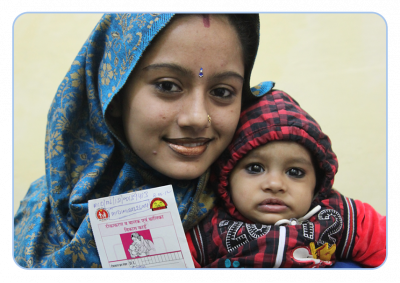What does behavioral outcomes = results mean?
“Behavioral outcomes = results” means you track trends, not items. You don’t just think about a program in terms of the number of things you can count, i.e., your traditional results. You think about it in terms of behaviors changed to achieve your goal, that is to say, your desired behavioral outcomes. Your results are your identified behavioral outcomes.
Why are behavioral outcomes as results so important?
We’ve said it before and we’ll say it again:
Focusing on behavioral outcomes keeps people and their behaviors at the heart of your program!
We know it feels scary to take responsibility for measuring the behaviors you are changing. But it is what you need to do. We talk a lot about behavior change but are often unwilling to take the leap and be held accountable for changing them.
We fall back on measuring the tried and true, the easy things, such as the number of latrines built. But counting items doesn’t tell us what we need to know – Are people actually using these latrines? Are the latrines well-maintained and kept up? If not, then “the number of latrines built” is a false metric of our priority behavior “families use clean, proper latrines”. It does not measure whether a behavior changed. It just measures what your program’s activities were, not your program’s impacts.
You are already at the forefront of cutting edge social and behavior change because you are using BIG for your program.
You’ve already told the world through this choice that you want to change how you do things.
You want your program to feel more rewarding and you’ve expressed your desire to see that change now because you are using BIG to design your work.
And you have declared that behaviors matter and “we want to put people and their behaviors at the heart of our program” because you have developed BIG pathways to change.
Now it’s time to show the world that behaviors matter so much that they need to be measured. That they need to be our metric of success and the results for social and behavior change programming.
When you begin to think of your results as behavioral outcomes with your communities, your partners, and your donors, they will also begin to see the value of putting behaviors first and allowing behaviors to guide program thinking.
This paradigm shift in how you measure results – as behavioral outcomes – starts with you. Lead the way like the rockstar you are. Communities need positive forces for change.
How do behavioral outcomes as results make BIG different?
Think | BIG emphasizes behaviors and behavioral outcomes from the beginning. And while we know that it can be difficult to develop good behavior indicators and track them, this is what makes BIG different. It shows you how to do just that! Behavior integration guidance provides the framework – pathways to change – and tools to make sure you measure behavioral outcomes and don’t fall back on “bean counting” like many other social and behavior change (SBC) and social and behavior change communication (SBCC) programs might do. BIG pushes you to make a big difference in your communities by changing priority behaviors. Measuring behavioral outcomes gives you the insight to crank up your program’s effects.
 BIG CONCEPT:
BIG CONCEPT: 

 The Manoff Group was acquired by JSI in 2022.
The Manoff Group was acquired by JSI in 2022.